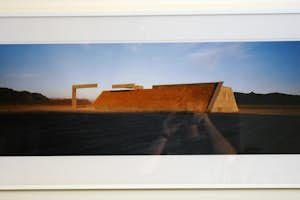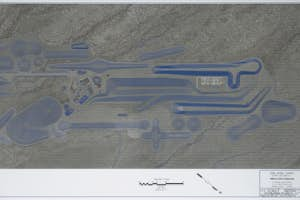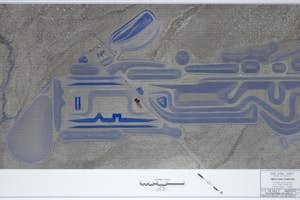Michael Heizer
Michael Heizer remarks, “I think earth is the material with the most potential because it is the original source material.” As a leading artist in the land art movement, Heizer has been intervening in the landscape since the late 1960s. Influenced by his anthropologist father and geologist grandfather, Heizer had his first solo exhibition at the Galerie Heiner Freidrich in Germany in 1969. For that show he excavated 1,000 tons of earth in a conical shape to form Munich Depression. In 1970 Heizer completed Double Negative, consisting of two trenches created by displacing 240,000 tons of rock at Mormon Mesa, Nevada. Of the project he said, “There is nothing there, yet it is still a sculpture.” In 1972 Heizer began construction on another enormous work, City, a long-term project in the desert of Lincoln County, Nevada. Heizer said of City, “I’m building this work for later. I’m interested in making a work of art that will represent all the civilization to this point.” Covering territory approximately a mile and a quarter long and more than three-quarters of a mile wide, akin to the size of the National Mall in Washington, DC, Heizer’s sculpture takes inspiration from the ancient city of Chichen Itza. This aerial survey photograph of the project illustrates its massive size and harmony with the landscape.
Heizer attended the San Francisco Art Institute and started painting and drawing on a small scale in 1966. In the late 1960s he traveled to Nevada and began working on his large-scale natural sculptures, which he called earth art. He has had a multitude of exhibitions since the late 1960s and continues to create and display his art. In 2016 photographs of City, his largest project, were displayed in the exhibition (Infra) Structure at Lannan Foundation.




